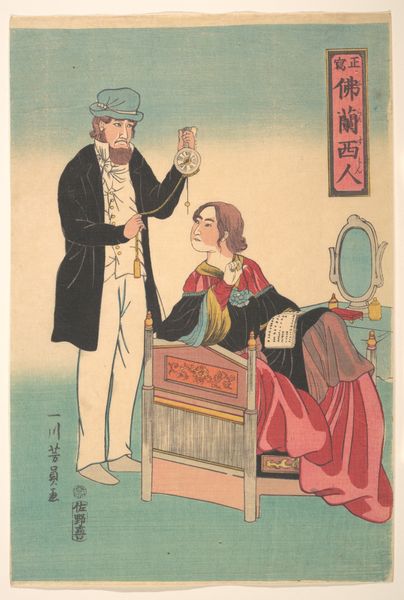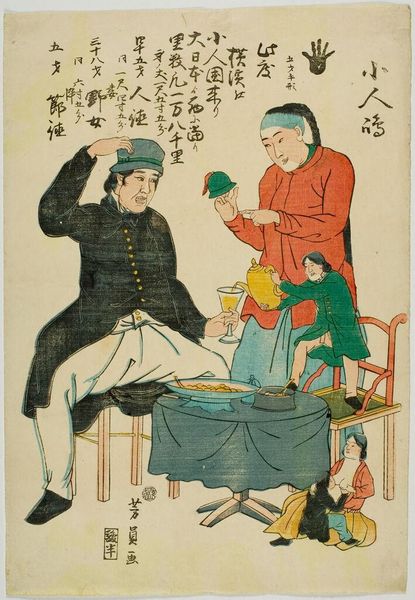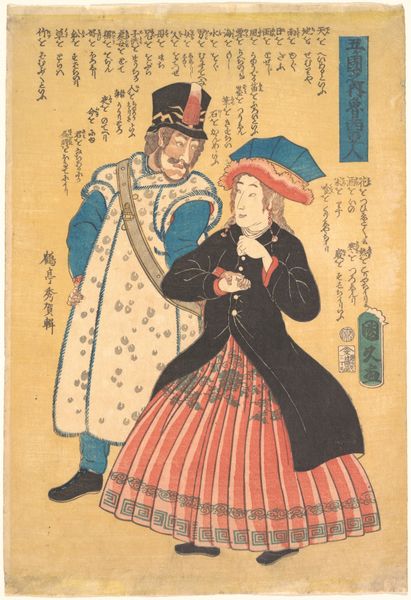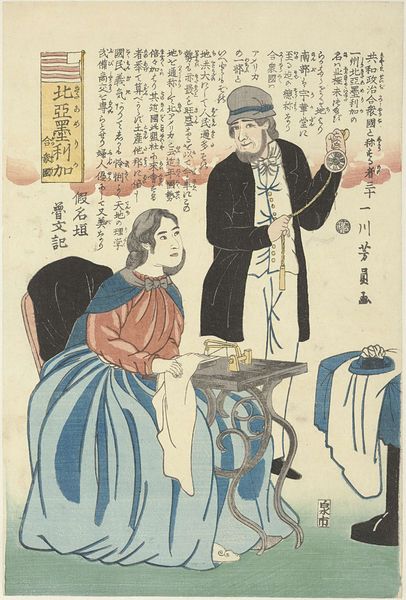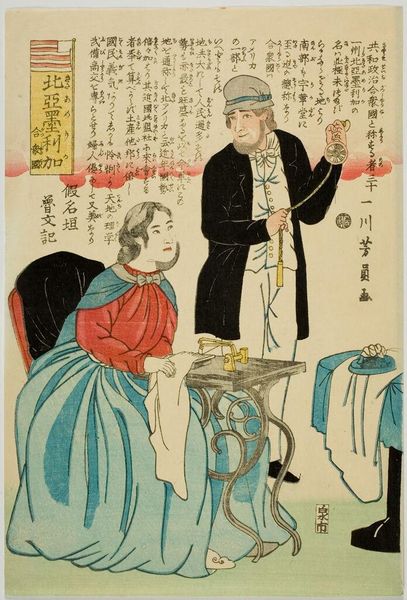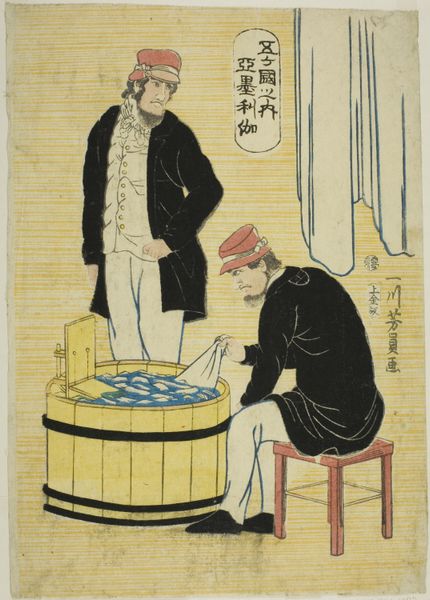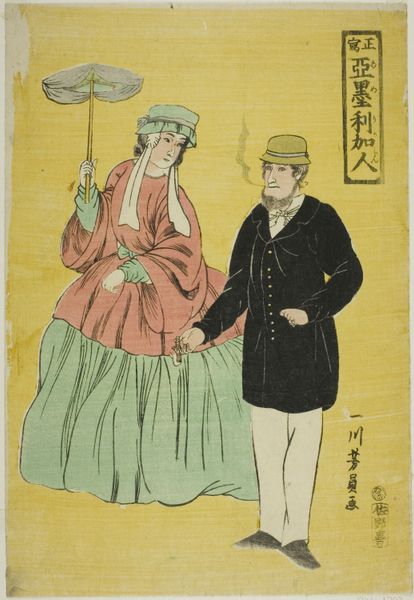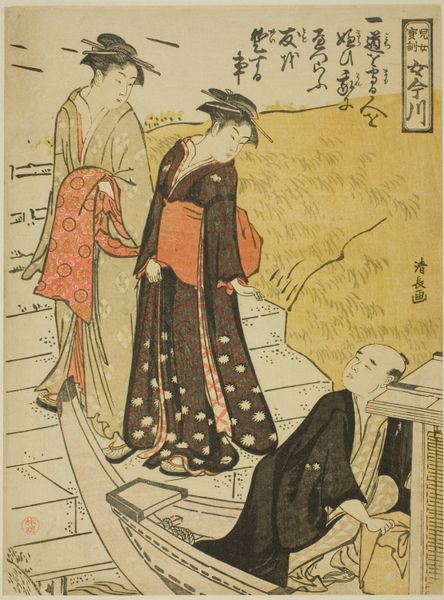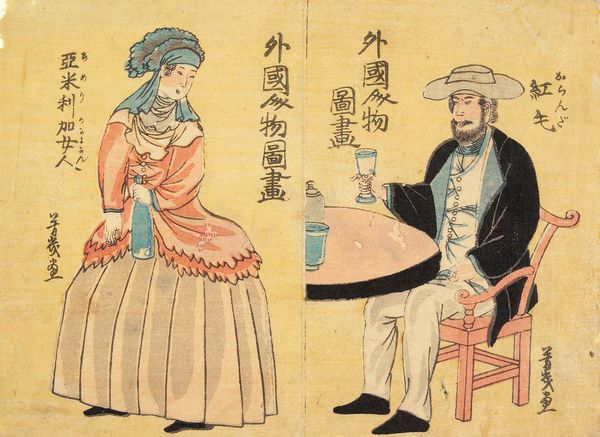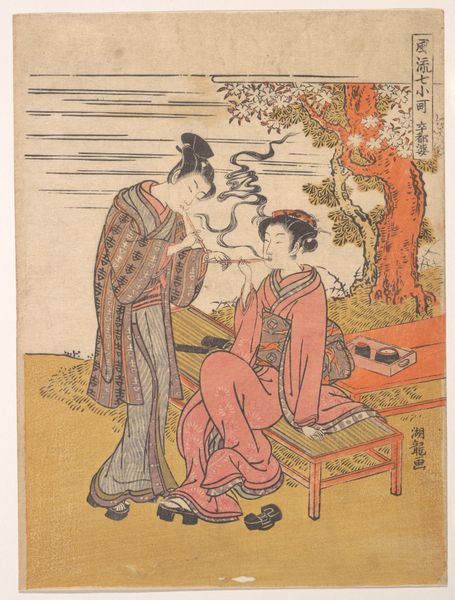
print, watercolor
#
portrait
#
water colours
# print
#
asian-art
#
ukiyo-e
#
watercolor
Copyright: Public Domain
Curator: What strikes me immediately is the odd serenity in this print, especially given the context. Editor: Right, this is Utagawa Yoshikazu's "True Picture of the French," a color woodblock print from 1861, part of a series depicting foreigners in Yokohama. Visually, I'm intrigued by the use of such flat, pastel colours and how it makes this clash of cultures all the more stark. Curator: Yes, the pastel colours almost soften the very real power dynamic on display. You have this Western man holding a pocket watch, an emblem of modernity, in front of what seems to be a courtesan, judging by her surroundings. It's about time, commerce, and the objectification inherent in colonial encounters. The composition is fascinating; how does that clock represent the relentless pace and control of Western expansion? Editor: The clock indeed acts as a potent symbol. Beyond time, it becomes a symbol of Western scientific advancement and perceived cultural superiority. Its presentation – dangling, almost mesmerizing – speaks volumes about how Western ideas could captivate and alter perspectives within Japanese society at that time. In my perspective, the mirror by her bed reflects on themes of self perception; as well, it could even highlight anxieties surrounding changing social roles or standards introduced by outside influence. Curator: Absolutely, there's this implicit tension: a commodification of time mirroring a commodification of the woman. Are both reduced to objects to be measured, possessed, and controlled within this new global exchange? The passivity with which the courtesan meets the viewer and then the man suggests this very idea; it speaks about limited options and power as well as resistance that can manifest, in very, quiet forms. Editor: Perhaps, her passivity becomes a kind of quiet strength. We can't assume complete subjugation and instead, she reclaims and subverts those male ideas of power with her presence. This offers the opportunity to contemplate how cultural dialogues and resistances materialize through understated interactions of identity. I do not see these women necessarily and/ or intrinsically doomed, powerless; quite contrarily, this image leaves me filled with many queries on agency. Curator: Thank you for prompting that interpretation; with your expertise in mind, the agency shifts slightly toward that direction when analysing from various, relevant and/ or marginalized perspectives. Editor: All signs and directions of consideration have led to insightful and necessary topics for the contemporary viewer to grapple with through various cultural works.
Comments
No comments
Be the first to comment and join the conversation on the ultimate creative platform.
